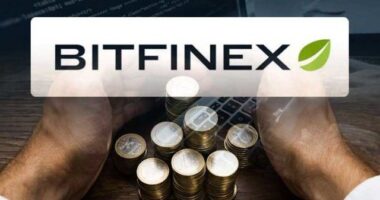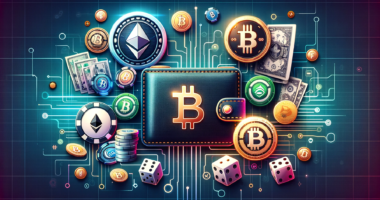Bitcoin, an unusual innovation in the history of the exchange, has recently emerged to be the centre of much financial attraction. The interest can be divided into two; the side that recognizes the value of a digitally scare asset and the other that remains skeptical about the perceived attention represented by a digital token. It might be hard for a large majority to digest, but there is absolutely nothing about Bitcoin that is physical.
There have been hundreds if not thousands of comparisons of Bitcoin with Gold. Bitcoin, like Gold, has slowly evolved into a unit of account, and in some ways, a store of value too (debate alert). But when assessed closely, one realizes both instruments carry weight individually on their own. There might be a few similarities between them here and there, but there are as many differences too.
To dive a little deeper into what Gold has meant historically, what Bitcoin means for the future and how those two are interconnected, let us first look at the history and philosophy of both the scarce mediums.
A (Very) Brief History of Gold
The history of gold is long and coated in a great deal of mystery and even more drama. Its weight, its grabbing shine, resistance to corrosion and immediate fungibility have likely all influenced historical and cultural perceptions of the element. Early civilizations equated gold with gods and rulers. It was sought in their name and dedicated to their glorification. Gold had a holistic value.
Humans almost intuitively placed a high value on gold, equating it with power, beauty, and the cultural elite. Gold has always had value to humans, even before it was money. It can even be argued that Gold helped define the modern term for money. Since gold was widely distributed all over the globe, we find the same perception throughout ancient and modern civilizations.
The total amount of Gold on Earth and Gold Rush History
Source: democracy.info
A monetary standard evolved through the use of Gold. It, slowly but surely, made a global economy possible. The concept of money, (i.e., gold and silver in standard weight and fineness coins) allowed the World’s economies to expand and prosper. In spite of their difference in sovereign unit of account, almost all of them recognized the value of Gold unilaterally. Gold’s beauty, scarcity, unique density, and the ease by which it could be melted, formed, and measured made it a natural trading medium. Gold gave rise to the concept of money itself: portable, private, and permanent. Thus, holding Gold brought a sort of honor or value to the holders, symbolizing wealth and privilege.
Even though modern functionality of Gold has transcended the traditional sacred image it held, it still acts as a mechanism for holding and transferring value. Modern applications of Gold can be seen in scientific detection experiments, as an instigator for electronic communication, as a coating for durable suits, dental arrangements and so on.
It is argued that Gold accumulated its name and value through the millennia because it was particularly portable and scarce. Gold, unlike other metal, had a high density and unparalleled metallic properties, with a scarce amount in circulation. But ever since the modern Information age has befallen, Gold is in severe danger of losing its millennia-long heritage.
16 Psyche is an asteroid about 100 meters in radius located in the asteroid belt between Mars and Jupiter. It contains 1% of the mass of the entire asteroid belt and is said to have an iron core, causing the surface to be made up of several heavy elements. The giant rock almost the size of Texas, has enough Gold, Platinum and other heavy metals considered “rare” on earth, that just the act of bringing them within Earth’s vicinity will have a major effect on the price of Gold. Gold will not be scarce anymore, but rather just another commodity available for commercial use. Gold could finally see large scale commercial and industrial application and stop acting as a reserve. The future is not that certain.
A (Very) Brief Bitcoin History
Before bitcoin was even conceived, Nick Szabo, one of the forefathers of the Bitcoin revolution and inventor of Smart Contracts, explained in a blog post the hurdles needed to achieve a virtual gold-like alternative. “There are some problems involved with implementing unforgeable costliness on a computer. If such problems can be overcome, we can achieve bit gold. This would be the first online currency based on highly distributed trust and unforgeable costliness rather than trust in a single entity and traditional accounting controls.”
Satoshi Nakamoto, a pseudonym, did just that. Borrowing from several ideas, he/she/they posted a paper to a cryptography mailing list in 2008 with the title “Bitcoin: A Peer-to-Peer Electronic Cash System”. This paper laid out the schema for a peer-to-peer network that would enable a “system for electronic transactions without relying on trust”. The underlying message was the elements of trust, accountability, or oversight, that had characterized commerce and exchange throughout history would be replaced by a system that would simply not need transacting agents to know one another.
To parallel Gold, Bitcoin, in theory, could be transacted with anyone without having to know that person. Gold has value because everyone else believes it has value. Bitcoin holds value because the network transacting in Bitcoin believe it does.
Bitcoin is entering a phase of higher substitutability with traditional currencies, as remarked by the increasing number of bitcoin-related products (direct or derivative), and the volume of exchange that is occurring. Gold, as an asset, has a 7,000-year history and its drivers of demand are easily identifiable. The demand for Bitcoin, on the other hand, is less clear and tends to centre around price speculation, buy-to-hold strategies and the underlying blockchain technology itself. But to support Bitcoin’s case, it has only been around for a decade after all.
“The idea of having a digital currency is not a new one. Before cryptocurrencies, many attempts at creating one have taken place. The main issue most of them were facing, was the double-spending problem. A digital asset somehow needs to be useable only once to prevent copying it and effectively counterfeiting it.”
Is Bitcoin Digital Gold?
Bitcoin, like gold, cannot simply be created arbitrarily. It is limited and finite in supply: about 21 million in total. Gold’s supply has historically increased at around 2% per year. Bitcoin’s supply will increase less than 2% starting at the 2020 halving and will go to less than 1% a year after the 2024 halving. Bitcoin’s supply will end when the last Bitcoin is mined approx – in the year 2140.
“What do antiques, time, and gold have in common? They are costly, due either to their original cost or the improbability of their history, and it is difficult to spoof this costliness. Precious metals and collectables have an unforgeable scarcity due to the costliness of their creation. This once provided money with the value of which was largely independent of any trusted third party. ” — Nick Szabo
As a physical asset, gold is stored in vaults, safety deposit boxes in banks and personal safes for smaller amounts. Bitcoins, on the other hand, cannot be stored in the traditional sense. Instead, what is stored is a secret number called a ‘private key’, which facilitates the transfer of Bitcoin from one party to another. In principle, it can even be stored on a piece of paper.
Bitcoin, as an asset is not a substitute or alternative to Gold. Bitcoin is an innovative technology developed through decades of innovation in cryptography and computation, whereas Gold is a rare element that evolved its place into the daily exchange. Somehow, even though they don’t share any common roots, Bitcoin and Gold became interlinked through the scarcity and portability they portray. If either loses one quality, it loses its value along with it.
Then What Is Bitcoin?
The age of Bitcoin is 11 years, as of 2019. The earliest actual large scale use of Gold dates back to 3000 B.C., meaning that Bitcoin has not even scratched the surface of influence that Gold boasts. Therefore, it is not quite fair to compare a nascent innovation on the internet with a 5 millennia-long cultural phenomenon. Yes, we can speculate on the apparent similarities and differences, but time will only answer on what the future of either instrument will be. In an age where Gold could severely shamble due to rapid increase in supply, Bitcoin could evolve as a fail-safe. Bitcoin, unlike Gold, has no fear of supply increase as the protocol is encoded to shell out only 21 million bitcoins in its entire lifetime. Saifedean Ammous, the author of The Bitcoin Standard once said, “Only Two Things are really Scarce: Time and Bitcoin”
What makes Bitcoin more portable than gold is its ability to divide itself into minute pieces. Bitcoin can account for itself unto 8 decimal places. So, in theory, one can transact 0.00000001 Bitcoin or 1 satoshi, if the need arises. If a time comes where there is a need to go smaller than 8 decimal places, the network can come to a consensus and fork itself to add more digits. This is one of the major differences between Gold and Bitcoin. Bitcoin is malleable such that it can transform into any shape and size as the market expects it to be, whereas the market accepts by default the characteristics of Gold and behave accordingly.
Bitcoin, including its similarities with Gold, is much more than Gold. Gold is fungible, portable, transferrable and accountable, and so is Bitcoin. But, Bitcoin is also flexible, customizable, transparent and inherently scarce without a doubt. Everything about bitcoin is mathematically derived, so there remains no chance of distrust or deception. Bitcoin is not, and should not be compared to Gold in the same way a tractor could not be compared with an F1 race car. Even though both are motor vehicles, they are inherently different entities.
Notice: Information contained herein is not and should not be construed as an offer, solicitation, or recommendation to buy or sell securities. The information has been obtained from sources we believe to be reliable; however no guarantee is made or implied with respect to its accuracy, timeliness, or completeness. Authors may own the crypto currency they discuss. The information and content are subject to change without notice. Visionary Financial and its affiliates do not provide investment, tax, legal or accounting advice. This material has been prepared for informational purposes only and is the opinion of the author, and is not intended to provide, and should not be relied on for, investment, tax, legal, accounting advice. You should consult your own investment, tax, legal and accounting advisors before engaging in any transaction. All content published by Visionary Financial is not an endorsement whatsoever. Visionary Financial was not compensated to submit this article Please also visit our Privacy policy; disclaimer; and terms and conditions page for further information.











